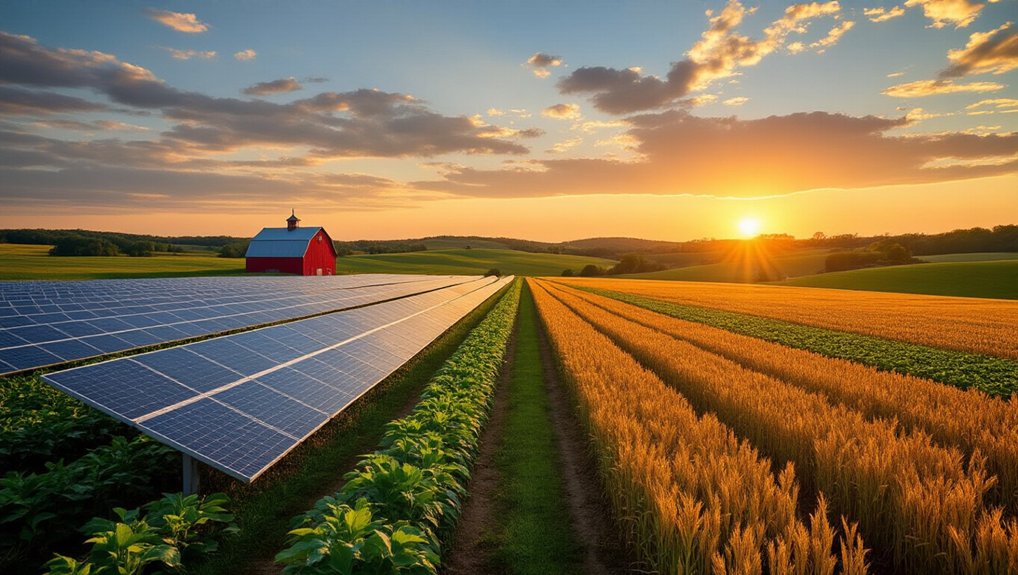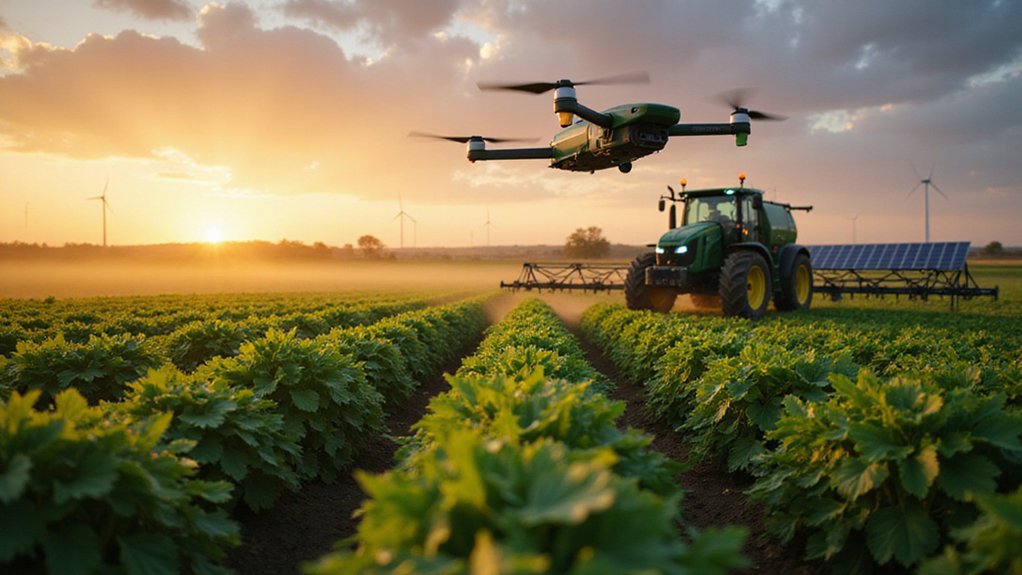While Michigan’s agricultural region has remained largely unchanged for generations, a quiet transformation is taking place across the state’s farmlands. Solar panels now dot settings once reserved exclusively for corn, soybeans, and cherries. The numbers don’t lie. Michigan’s solar capacity exploded to over 1,444 MW by the end of 2023, a massive jump from 2016 when solar provided a pathetic 0.25% of the state’s electricity. Now? It’s up to 1.3%. Still tiny, but growing fast.
The Assembly Solar farm, completed in 2022, leads the charge with a whopping 347 MW capacity. Several more solar farms between 100 and 200 MW are in the pipeline. Farmers aren’t just growing crops anymore—they’re harvesting sunshine. And making money doing it.
This isn’t just about energy production. It’s about jobs. Over 4,000 Michiganders now work in the solar industry. That’s 4,000 paychecks that weren’t there before.
Sure, installing solar isn’t cheap—a typical home system runs about $15,776 before incentives—but the 9-12 year payback period makes financial sense. Even in Michigan’s notoriously cloudy climate. The federal 30% tax credit significantly reduces the initial investment costs for both residential and commercial installations.
The real game-changer? Agrivoltaics. Fancy word for a simple concept: growing crops under solar panels. It sounds crazy until you look at the research. Michigan State University has proven that crops and panels can coexist. Sometimes the partial shade even boosts yields. Japan figured this out years ago. Germany, France, India, and China followed suit. Michigan’s finally catching up.
Not everyone’s thrilled. Some groups are pushing a ballot initiative to ban utility-scale solar on agricultural land. They worry about losing farmland. It’s a valid concern. But modern agrivoltaic methods make it a false choice. You can have both.
The evolution faces hurdles. Michigan ranks among the lowest states for solar irradiance—translation: it’s cloudy a lot. The state also lags in community solar legislation. This ongoing debate represents a critical opportunity to create a win-win scenario for both energy production and agriculture. Governor Whitmer has helped push Michigan forward by signing legislation for a clean energy transition by 2040. But technology keeps improving, and solar keeps expanding.
Michigan’s farms are changing, ready or not. Sun-powered agriculture isn’t just coming—it’s already here.
References
- https://en.wikipedia.org/wiki/Solar_power_in_Michigan
- https://www.bridgemi.com/guest-commentary/opinion-michigan-need-not-choose-between-farmland-and-solar-panels
- https://www.greenlancer.com/post/going-solar-in-michigan
- https://www.wxpr.org/energy-environment/2025-04-25/michigan-state-university-study-crops-and-solar-panels-can-coexist
- https://www.energysage.com/local-data/solar/mi/








